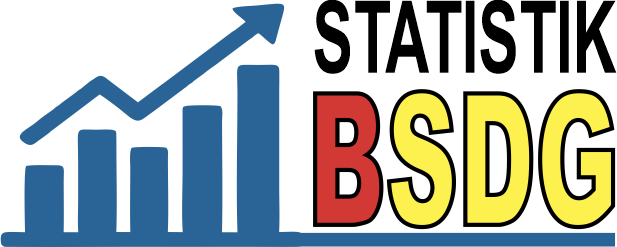APPLIED GEOSTATISTICS TO THE ASSESSMENT OF ENHANCED GEOTHERMAL SYSTEM (EGS) IN CENTRAL SUMATERA BASIN
Abstrak
Thick sediment (over 2,500 m), fractured basement and high thermal gradient (up to 19.10 C/100 m) of Central Sumatra Basin are suitable factors to have the Enhanced Geothermal System (EGS) potential. A number of 130 wells data were used to evaluate the EGS of the basin. The assessment is divided into the number of estimation within the grid cell (1x1 km) of sediment thickness, heat flow, thermal conductivity and technical potential calculated starting from basement-sediment layer interface. The distribution of heat flow and gradient thermal values correspond to the sediment layer. The autocorrelation test indicates the data is stationary. The variance of data gets bigger after a depth over 5.5 km. According to the Beardsmore protocol, the technical potential value ranged from 0.5 MW up to 4.7 MW at a depth of 3.5 km. In addition, the lowest technical potential is 0.66 MW and the highest is 5.76 MW at a depth of 4.5 km. The ordinary kriging, using the number of lags 10 in variogram modeling, estimated the technical potential distribution is higher to the southwest.
##plugins.generic.usageStats.downloads##
Referensi
Pambudi, N.A., 2017. Geothermal power generation in Indonesia, a country within the ring of fire: Current status, future development and policy. Renewable and Sustainable Energy Reviews. 81, p. 2893-2901.
Limberger, J., Calcagno, P., Manzella, A., Trumpy, E., Boxem, T., Pluymaekers, M.P.D. and van Wees, J.D., 2014. Assessing the prospective resource base for enhanced geothermal systems in Europe. Geothermal Energy Science. 2(1). p. 55.
Tester, J. W., Anderson, B. J., Batchelor, A. S., Blackwell, D. D., DiPippo, R., Drake, E., ... and Petty, S., 2006. The future of geothermal energy: Impact of enhanced geothermal systems (EGS) on the United States in the 21st century. Massachusetts Institute of Technology, p. 209.
Hendrawan, R.N. and Draniswari, W.A., 2016. Assessing the possibility of Enhanced Geothermal System in western Indonesia. IOP Conference Series: Earth and Environmental Science. Sci. 42. 012021.
Beardsmore, G.R., Rybach, L., Blackwell, D. and Baron, C., 2010. A protocol for estimating and mapping global EGS potential. GRC Transactions. 34. p. 301-312.
Busby, J. and Terrington, R., 2017. Assessment of the resource base for engineered geothermal systems in Great Britain. Geothermal Energy. 5(1). p. 7.
Rybach, L., 2010. The future of geothermal energy and its challenges. Proceedings World Geothermal Congress Bali 2010, 29, p. 4.
Van Wees, J., Boxe, T., Angeloni, L., and Duas, P., 2013. A Prospective Study on the Geothermal Potential in the EU. Geoelect Report.
Eubank, R.T. and Makki, A.C., 1981. Structural Geology of the Central Sumatra Back-arc Basin. Indonesian Petroleum Association, Proceeding 10th Annual Convention, p. 153-196.
Heidrick, T.L. and Aulia, K., 1993. A structural and Tectonic Model of The Coastal Plain Block, Central Sumatera Basin, Indonesia. Indonesian Petroleum Association, Proceeding 22th Annual Convention, 1, p. 285-316.
Clauser, C., 2006. Geothermal energy. Landolt-Börnstein, group VIII: advanced materials and technologies, 3, p. 493-604.
Slagstad, T., 2008. Radiogenic heat production of Archaean to Permian geological provinces in Norway. Norwegian Journal of Geology, 88, p. 149-166.
Curran, P. J., 1988. The Semivariogram in Remote Sensing: An Introduction. Remote Sensing of Environment. 24(3). p. 493-507.
Lee, C. F., Lee, J. C., and Lee, A. C., 2000. Statistics for business and financial economics. World Scientific. 1. Singapore. p. 712.
##submission.copyrightStatement##
##submission.license.cc.by-nc-sa4.footer##Penulis yang naskahnya diterbitkan menyetujui ketentuan sebagai berikut:
Hak publikasi atas semua materi naskah jurnal yang diterbitkan/dipublikasikan dalam situs Buletin Sumber Daya Geologi ini dipegang oleh dewan redaksi dengan sepengetahuan penulis (hak moral tetap milik penulis naskah).
Ketentuan legal formal untuk akses artikel digital jurnal elektronik ini tunduk pada ketentuan lisensi Creative Commons Attribution-ShareAlike (CC BY-SA), yang berarti Buletin Sumber Daya Geologi berhak menyimpan, mengalih media/format-kan, mengelola dalam bentuk pangkalan data (database), merawat, dan mempublikasikan artikel tanpa meminta izin dari Penulis selama tetap mencantumkan nama Penulis sebagai pemilik hak cipta.
Naskah yang diterbitkan/dipublikasikan secara cetak dan elektronik bersifat open access untuk tujuan pendidikan, penelitian, penyelidikan, dan perpustakaan. Selain tujuan tersebut, dewan redaksi tidak bertanggung jawab atas pelanggaran terhadap hukum hak cipta.















